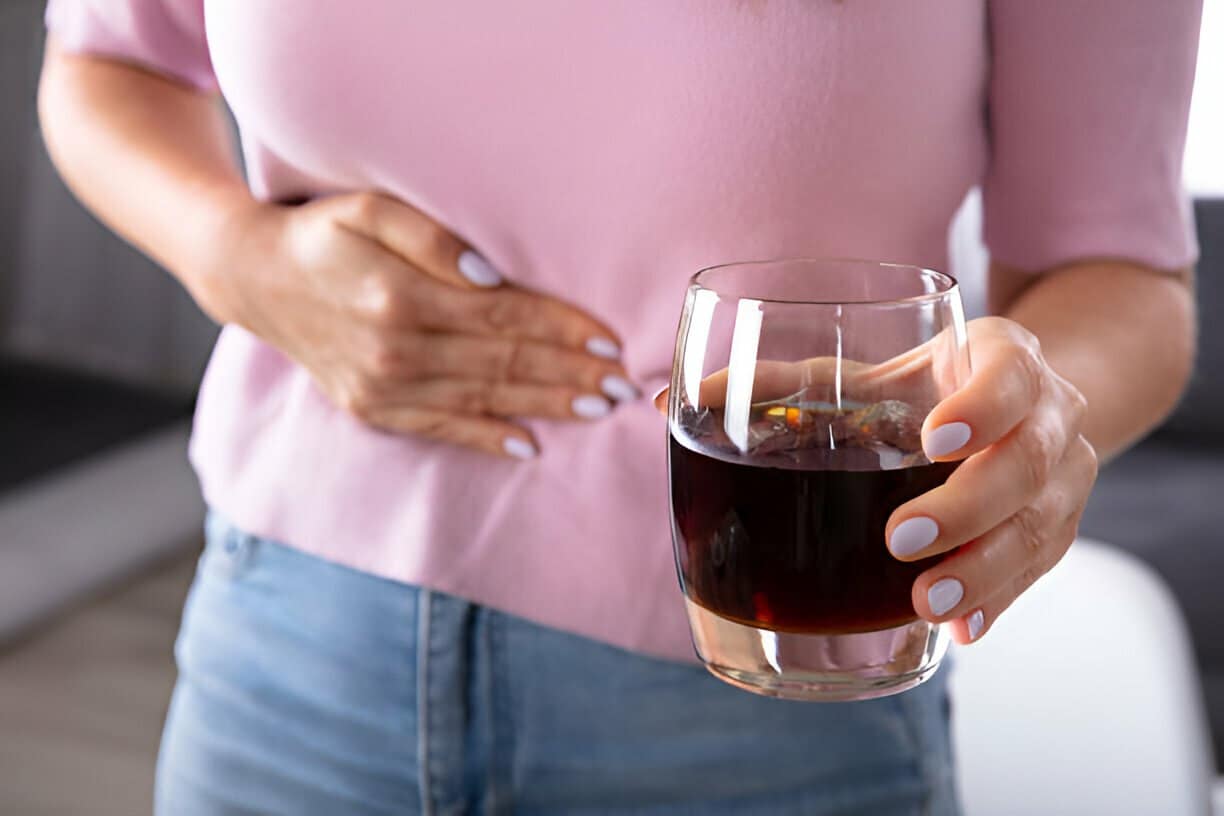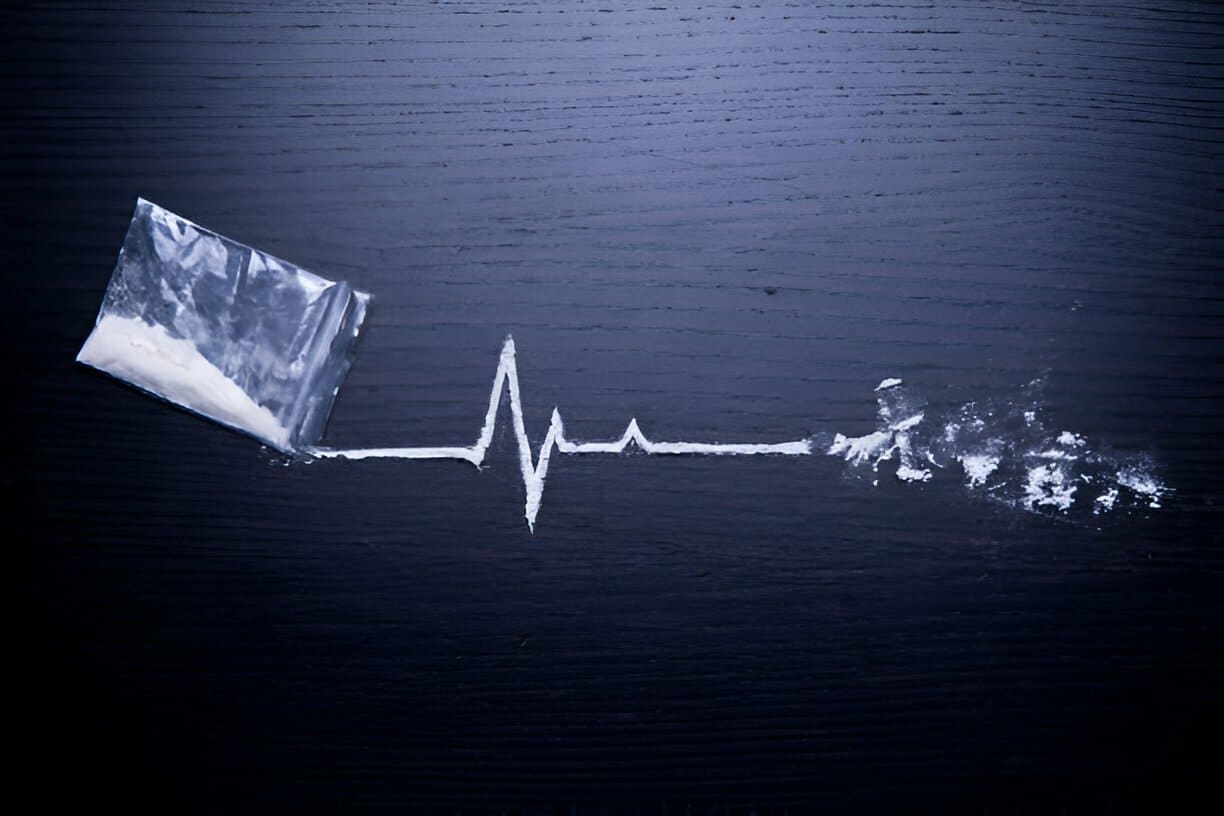Start exploring drug and alcohol rehabs today. Treatment providers are available to answer your questions.
Opiates are a broad category of medications that include a wide range of substances. These include illegal drugs such as heroin and opium and prescription drugs like codeine, hydrocodone, fentanyl, and morphine. The active ingredient in these drugs is called an opiate alkaloid.
Opiates are narcotic pain relievers that work by binding to opioid receptors located throughout the brain and body. The body has several types of these receptors, but only one type binds opioids with great specificity: the mu-opioid receptor. MORs are found throughout the central nervous system and are involved in regulating mood, sleep, and pain perception. They also regulate motor function and breathing.
Opiates are highly addictive because they activate powerful reward centres in your brain. Opiates trigger the release of endorphins, your brain’s feel-good neurotransmitters. Endorphins mask your perception of pain and boost feelings of pleasure, creating a temporary but powerful sense of well-being.
There are two types of opioid drugs: Opioids and Opiates. Both are psychoactive chemicals that affect the central nervous system. These terms are often used interchangeably because these substances largely produce the same effects. However, there are differences between the two.
Opiates are drugs that include active components derived from Opium. Morphine and Codeine are two common opiates, both of which are derived directly from the Opium found in poppy plants.
Opiate acts on only one receptor: the mu receptor.
Opioids are man-made chemicals that replicate the effects of opium. Some Opioids are completely synthetic, while others are just half synthetic, containing natural opium.
Opioids act on the CNS via three receptors: mu, delta, and kappa. This means that opioids tend to be more effective at relieving pain than opiates.
Opioids are also much stronger than opiates. They are typically 10x to 100x more potent than opiates.
For example, Fentanyl is up to 100 times more potent than morphine.
Opiate Addiction is a serious problem that requires immediate attention. Call us on 0800 999 1083 to discuss treatment options.
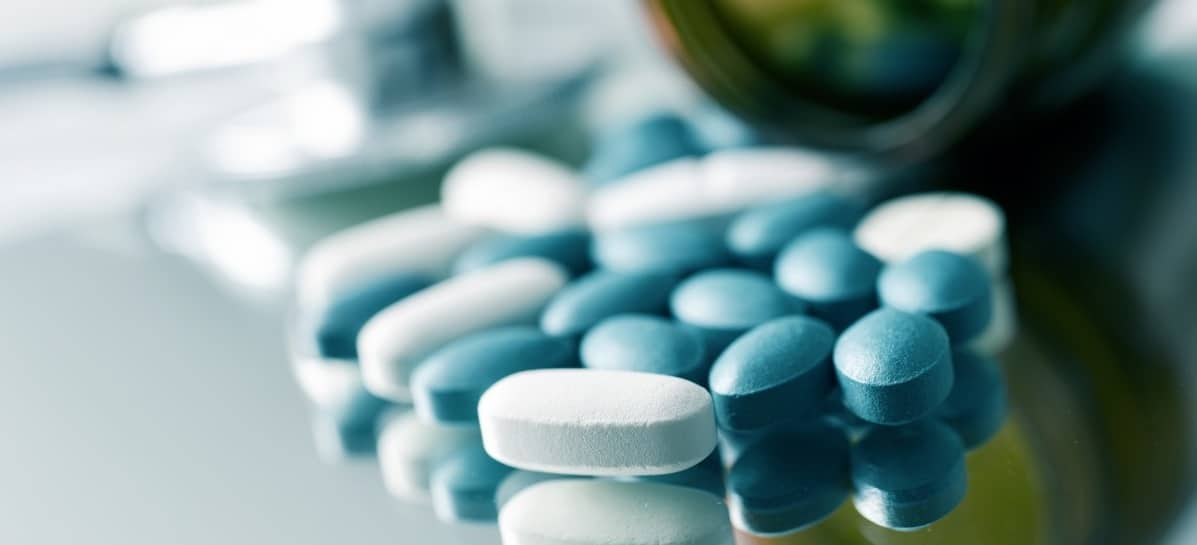
Opiates come in different forms, including pills, liquids, powders, patches, and syrups. Some people prefer certain forms over others because they feel better when taking them.
For patients suffering from severe chronic pain, morphine has been hailed as a saviour. It’s also one of the most addictive substances on the planet, and it’s responsible for a significant number of unintentional drug-related deaths around the world. Morphine street names include Miss Emma, Monkey, White Stuff and M.
Codeine is an opium derivative that comes in pill form. Its street name is “hillbilly heroin.”
Methadone is a synthetic opioid that was originally designed to help addicts quit smoking. It is now prescribed off-label for the treatment of chronic pain. Methadone street names: Tootsie Roll, Red Rock, Mud, Dolls.
Heroin is a powerful narcotic that s derived from the plant Papaver somniferum. It is sometimes called “brown sugar” because of its sweet taste. Heroin is available in liquid, powder, tablet, capsule, and patch form. Its street name varies regionally but generally includes variations of “horse,” “junkie,” “sugar,” “white horse,” “whip,” and “dope.”
Fentanyl is a potent synthetic opioid that is used as a painkiller. Its street name is either “fantastic” or “the devil’s milk.”
Though now banned by the FDA, Darvocet and Darvon are Propoxyphene-based Medications that were responsible for thousands of hospitalisations and deaths during their prime. Despite the fact that these treatments are no longer prescribed, there is still an illicit market selling them. Street names: Darvon Cocktail, Pinks, Footballs, Pink Footballs, Yellow Footballs, 65’s, N’s
Demerol is a narcotic used to treat moderate to severe pain. Because of its significant potential for addiction, it is less commonly recommended in current times. Meperidine, often known as Demerol, has euphoric effects similar to Morphine. Street names include Smack, Dust, Juice, D, Dillies.
Hydrocodone is a semi-synthetic opioid that is similar to oxycodone. Hydrocodone is an opioid used to treat pain and as a cough suppressant. Street names include fluff, hydros, v-itamin, vic, vike, Watson-387.
Hydromorphone is a semi-symmetric opioid that is similar to Oxymorphone. Sometimes referred to as “Hospital Grade Heroin,” Dilaudid is a potent form of Painkiller. Dilaudid abuse can rapidly lead to respiratory issues and even death. Its street name is either “Zombie” or “Hollywood H.”
Oxycodone is a semi-opioid analgesic that is similar to hydrocodone. It is an opioid medication used for the treatment of moderate to severe pain. It is highly addictive and a common drug of abuse. Oxycontin is a long-lasting version of oxycodone. Its street name include oxy, OC, Kicker, Hillbilly Heroin.
Oxymorphone is a semi-opioid analgesic that is similar in structure to hydromorphone. Oxymorphone is a highly potent opioid analgesic indicated for the treatment of severe pain. Its street names include Blue Heaven, Pink Lady, Pinko, Stop Signs, and The O Bomb.
Percocet is a prescription pain reliever that combines Oxycodone (an opioid analgesic) and Acetaminophen (a mild pain reliever). If abused in large doses, Percocet can lead to experiencing a “high” that’s similar to that of heroin. Percocet abuse will, in time, lead to problems of dependence and addiction. Street names include cotton, hillbilly heroin, o.c., ox, oxy, oxycet, oxycotton, percs, pills.
Tramadol is a painkiller and opioid analgesic typically prescribed for the treatment of moderate to moderately severe pain. Tramadol has a high potential for abuse and is commonly used for its pleasurable effects. In high doses, Tramadol can produce euphoric and mood-enhancing effects. But continuous abuse in high doses places you at the risk of seizures and convulsions.Tramadol street names: Chill Pills, Trammies, Ultras.
In the United Kingdom, there are three different categories of opiates: Class A, Class B, and Class C. All three classes of opiates are scheduled drugs under the Misuse of Drugs Act 1971. Schedule 1 drugs are considered to be the most dangerous because they are highly addictive and potentially deadly.

Schedule 1 drugs include morphine, diamorphine, diacetylmorphine, dextromethorphan, levomethorphan, nalbuphine, and pentazocine.
Morphine is an opium derivative that was originally synthesised in 1874. Heroin was developed in 1898 as a treatment for morphine addiction. In 1924, heroin became illegal in the United States.
Diamorphine is a semi-symmetrical opioid that is chemically similar to morphine. Diamorphine is used medically to treat moderate to severe pain. Dextromethorphan is a cough suppressant that was approved in 1959. Levomethorphan is a metabolite of dextromethorphan that acts as an antagonist at the M1 muscarinic acetylcholine receptor.
Nalbuphine is a semi-selective opioid agonist that was approved in 1991. Pentazocine is a benzomorphan that was approved in 1989.
Schedule 2 drugs include buprenorphine and butorphanol. Buprenorphines were developed in the 1950s. Butorphanol is a synthetic opioid that produces euphoric effects.
Schedule 3 drugs include tramadol and tapentadol. Tramadol is a synthetic opioid that is structurally related to codeine. Tapentadol is a centrally active opioid agonist with dual action on both μ-opiate and κ-opiate receptors. Tramadol was approved in 1992. Tapentadol was approved in 2010.
There are two main routes of administration for opiates: oral and parenteral.
Oral administration includes swallowing or snorting the drug. Parenteral administration involves injecting the drug into the skin, muscle, vein, or subcutaneous tissue.
Opiates taken orally are absorbed through the gastrointestinal tract. The absorption rate varies depending on the type of opiate. For example, codeine takes longer to absorb than morphine.
Parenteral administration allows for rapid onset of action. However, it also has several disadvantages. It requires medical training and equipment. It may cause allergic reactions such as itching, redness, swelling, and pain at the injection site. It also increases the risk of overdose.
Don’t go through the process of recovery alone. Treatment providers can answer your questions. Get in touch with one today.
Call 0800 999 1083 today!
Both Opioids and Opiates depress the central nervous system by activating receptors in the brain. Endorphins are “feel-good” chemicals that are released when receptors are engaged by one of these substances. Endorphins are released as a result of opiate or opioid use, resulting in sensations of relaxation and calm that can be highly addictive.
When someone takes an opioid medication, it attaches itself to the MORs (Mu-opioid receptors) in the brain. Once attached, the opioid mimics the action of natural endorphins and produces similar effects. Endorphins are naturally produced in your body and act as a “feel good” substance. They make you feel happy, relaxed, and sleepy.
An opioid works similarly to endorphins but is much stronger. It provides a feeling of well being that lasts longer and is more intense than endorphins.
There are two main types of opiates: short-acting and long-acting. Short-acting opiates last anywhere from 30 minutes to 2 hours. Long-acting opiates last up to 12 hours. Both types of opiates work by attaching themselves to the mu receptors in the brain.
It doesn’t matter whether a medication is derived from a natural source or is chemically synthesised. Opiates and Opioids both have the same risk of abuse and addiction. Before taking an Opiate or Opioid drug, please discuss these concerns with your doctor.
Opiate Addiction is a serious problem that requires immediate attention. Call us on 0800 999 1083 to discuss treatment options.
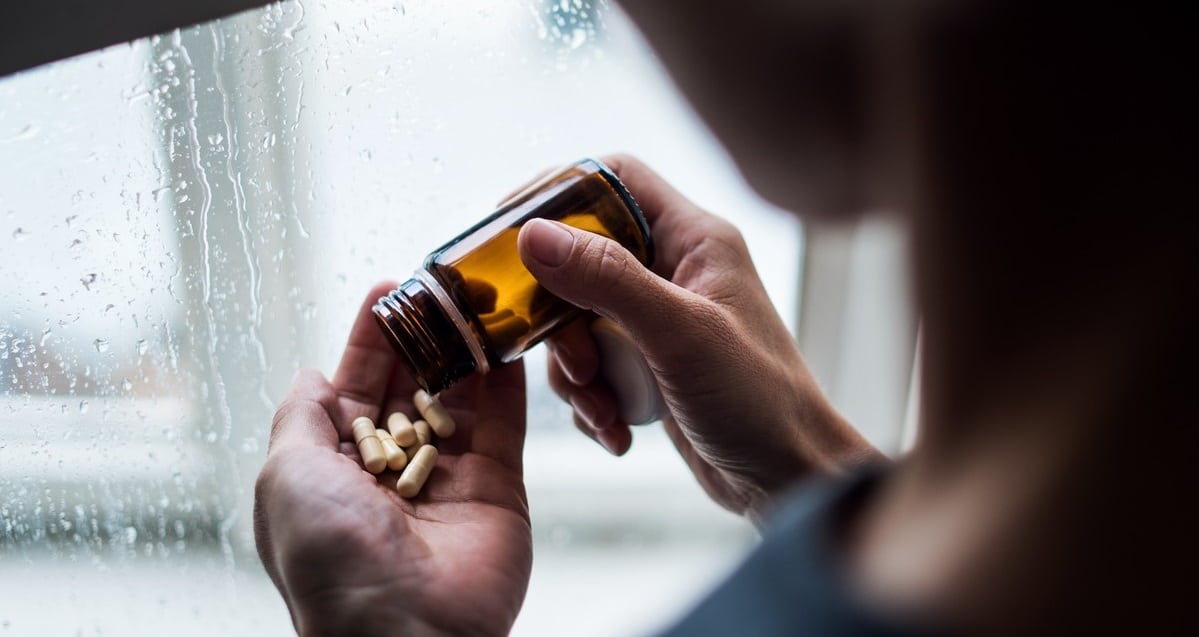
For most of the 20th century, doctors were prescribing large amounts of opioids to treat chronic pain. Over time, however, researchers began discovering that these medications could be extremely addictive. Some studies even suggested that some people became addicted after taking just a few doses.
As a result, doctors started prescribing fewer opioids. Unfortunately, this caused many people to turn to illegal street drugs like heroin or illicit versions of prescription pills. Others turned to self-medicating with alcohol or other drugs like heroin.
Increases in opioid misuse and overdoses, as well as a rising prevalence of infants experiencing withdrawal syndrome as a result of opioid use during pregnancy, are all devastating effects of the opioid epidemic.
Opiate Addiction is a serious problem that requires immediate attention. Call us on 0800 999 1083 to discuss treatment options.
Opiate addiction is defined as the compulsive use of opiates, despite negative consequences. You may hear people refer to it as “opioid addiction” instead.
People who develop an addiction to opiates usually start out using them legally for medical purposes. They then begin abusing the drug and eventually develop tolerance to it.
People who develop an addiction to opiate medications often report feeling like they need to use the medication every few hours. When this happens, they often increase the number of opiates that they consume. Eventually, they find themselves unable to function without opiates.
Opiate Addiction is a serious problem that requires immediate attention. Call us on 0800 999 1083 to discuss treatment options.
When people use opiates recreationally, they typically take far larger doses than those prescribed by doctors. This makes it easy for them to build up a tolerance to the drug.
As a result, they end up needing to take higher doses to achieve the same effect. Over time, they may need to take so much of the drug that it becomes physically painful to stop.
This is why it’s important to keep track of how many opiates you take. If you notice that you’re consuming more than what was prescribed, then contact your doctor immediately.
It’s also important to avoid mixing opioid medications with other drugs. For example, combining an opioid with alcohol will only speed up the process of building tolerance. This is why it’d be best to stick to one type of opioid at a time.
When someone takes large amounts of opioids over time, they may develop a tolerance to the drug. A person who develops a tolerance needs higher and higher doses of the substance to achieve the same desired effect.
When you start taking opiates, you feel relaxed and calm. But after a while, you start feeling anxious and agitated. This is because your brain has been conditioned to expect a certain amount of comfort from opiates. When you don’t take enough of the drug, your body responds by releasing stress hormones. This causes you to feel tense and restless.
Once someone begins developing a physical dependence on opioids, they’ll likely experience withdrawal symptoms if they suddenly stop taking the drug. These withdrawal symptoms include:
These symptoms are caused by the body trying to compensate for the lack of natural opioids. It takes a while for the body to adapt to life without opioids. During this period, the individual experiences withdrawal symptoms.
In addition to physical dependence, some people develop a psychological dependence on opiates.
Psychological dependence develops when a substance becomes central to a person’s thoughts, feelings, and behaviours. It can be manifested by a strong desire to use the drug despite knowing its negative consequences.
Individuals who have developed a psychological dependence on opiates will feel anxious whenever they think about stopping the use. This is because they associate the feelings of euphoria with the drug itself.
Psychological dependence can cause serious depression, anxiety, paranoia, and suicidal thoughts. It’s therefore essential that anyone who experiences these symptoms seek help immediately.
Psychological symptoms of opiates addiction include:
The following behaviours may also be signs of opiate addiction:
Opiate Addiction is a serious problem that requires immediate attention. Call us on 0800 999 1083 to discuss treatment options.
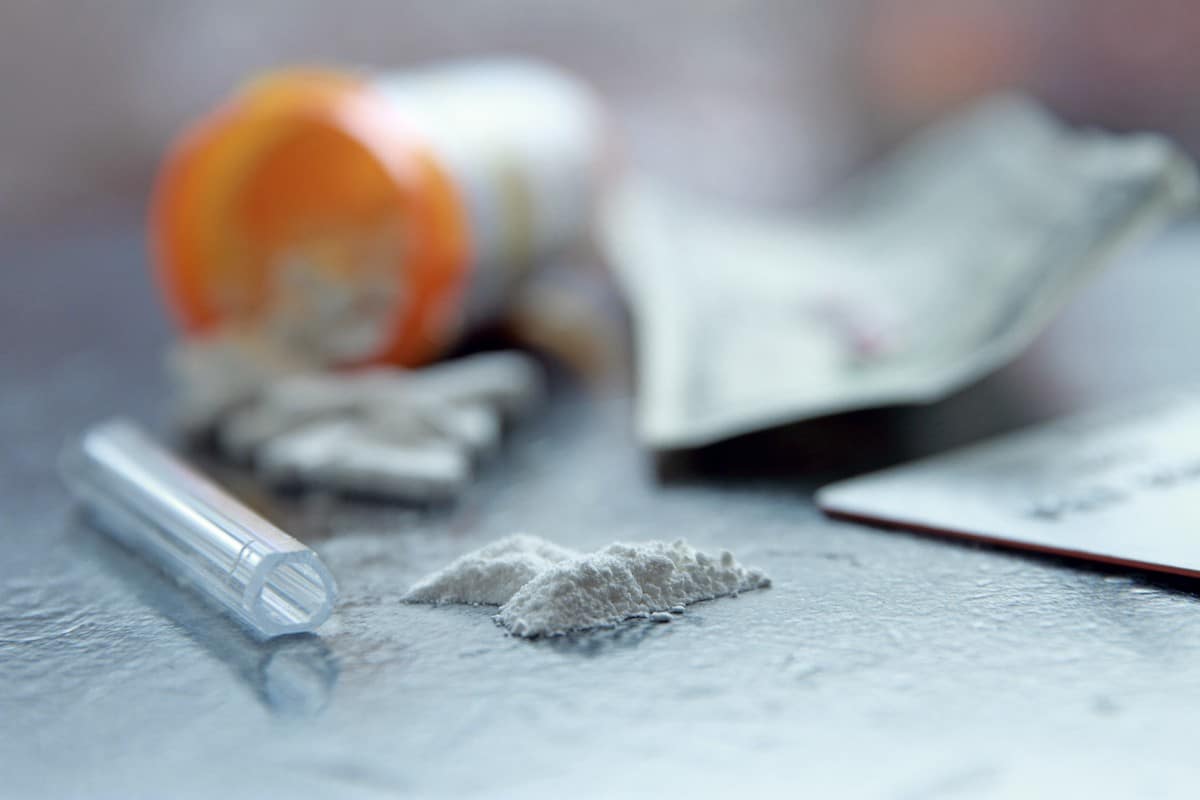
Many people who become addicted to opioids first got hooked by taking pain medication prescribed by their doctor.
Patients can take steps to reduce their risk of developing an opioid addiction. These include:
Prescription drug abuse, such as opioid abuse, is most often accidental. Increased tolerance to the medication’s effects is frequently the cause. When this happens, the opioid loses its effectiveness, and many people respond by increasing their dosage, unaware that this is classed as prescription drug misuse.
Physical dependency, which is often a precursor to addiction, develops when the cycle of tolerance and abuse continues. Countless people become addicted to opioid medications without ever realising it. They only discover that they can’t operate without the drug when they try to quit.
Although opiate drugs have a high potential for abuse due to the sedative effects and the intense feelings of pleasure they induce, not everyone who uses them will become addicted. So why are some people affected while others are not?
A person may be genetically predisposed to develop an addiction to opiates due to specific genetic mutations. However, environmental factors play a major role as well. For example, if a child is exposed to drugs at a young age, they will likely be more susceptible to developing a drug addiction later on in life.
The following factors can contribute to an individual becoming addicted to opiates:
Genetic factors contribute to whether someone will become physically dependent on the drug.
People who inherit certain genes are at greater risk of becoming physically dependent on drugs such as Opiates. These genes affect your body’s ability to break down the chemicals in the drug.
Certain personality traits may make some people more vulnerable to developing a drug addiction. For example, those who are impulsive, sensation-seeking, or rebellious are more likely to abuse Opiates.
People who live in areas with high unemployment rates, poverty, crime, violence, and other unfavourable circumstances are more likely to abuse drugs and develop an addiction.
A family history of drug addiction is also a contributing factor for someone developing an Opiate addiction. If you’re exposed to drug-seeking behaviour, especially at an early age, you might feel it’s ok to engage in Opiate Abuse.
Stressful events such as divorce, the death of a loved one, financial problems, relationship difficulties, or moving away from home can trigger episodes of Opiate Abuse. Early childhood trauma has also been linked to developing drug addiction later on.
As with other drugs, you might feel influenced by your friends to experiment with Opiates. The attitude of “everyone is doing it” and “you only live once” might make you forget the dangers of Opiates use and feel like taking this drug to fit in.
People who suffer from depression or anxiety disorders are more likely to abuse opiates. In fact, these two conditions often coexist.
Depression causes you to feel sad and blue. Anxiety causes you to worry excessively. Both of these feelings can make it difficult for you to cope with everyday stressors.
When you’re depressed or anxious, you may feel hopeless. This feeling can make you think that nothing good will ever happen again. It’s possible that you’ll become desperate enough to turn to drugs and alcohol to help you deal with your problems.
Opiate Addiction is a serious problem that requires immediate attention. Call us on 0800 999 1083 to discuss treatment options.
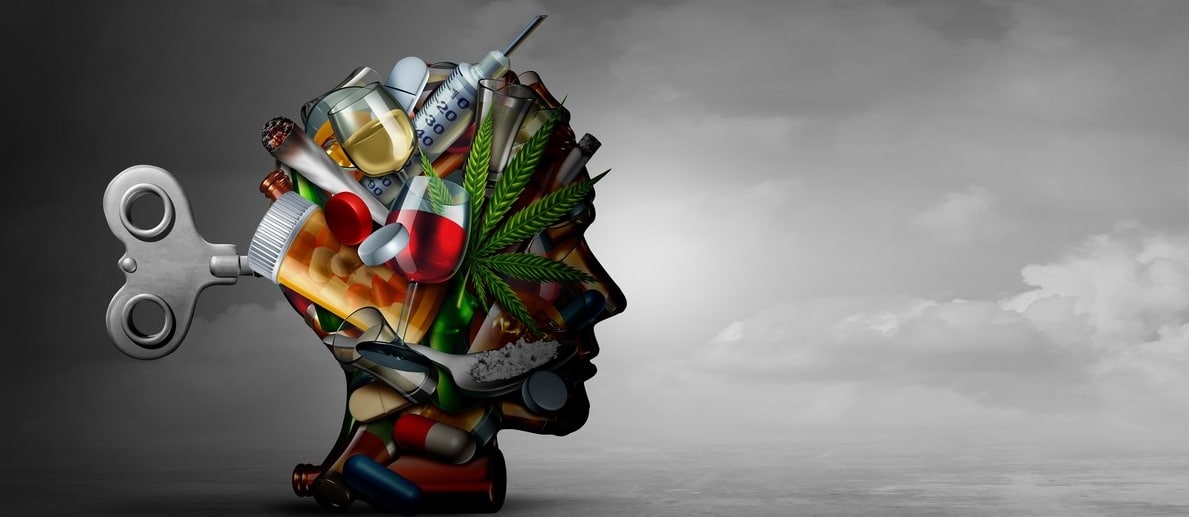
Opioids produce a wide range of effects depending on the dose ingested. Some people experience no effect whatsoever. Others feel relaxed or even energetic after taking low doses of opioids. Higher doses will usually produce some level of physical dependence.
When opioids first come into contact with the body, they produce a feeling of warmth and comfort. This initial rush of energy lasts anywhere from 5 minutes to 2 hours. It’s often referred to as the “rush” or “high.” After the initial rush has passed, most people report feeling tired and drowsy.
The side effects of opiates depend on how much you take, how long you take them for, and what type of opiate you use. For example, if you take too much codeine or oxycodone, you may experience nausea, vomiting, dizziness, drowsiness, constipation, and blurred vision. If you take too much methadone, you may feel anxious, depressed, and irritable.
If you use heroin, you may become addicted. You will also likely experience withdrawal symptoms when you stop using heroin. Withdrawal symptoms include anxiety, depression, sweating, shivering, muscle cramps, diarrhoea, vomiting, headaches, insomnia, tremors, and seizures. The severity of your withdrawal symptoms depends on how long you’ve been using heroin.
Speak to us on 0800 999 1083 to discuss treatment options and to find the best alcohol rehab centre.
Over time, long term use of opiates can damage the liver, kidneys, lungs, pancreas, stomach, intestines, skin, bones, muscles, teeth, and eyes.
If you abuse opiates, you may develop hepatitis C. Hepatitis C is a viral infection that can cause liver inflammation and scarring.
You may also experience kidney disease due to prolonged use of opiates. Kidneys filter waste products out of the bloodstream. If they become damaged, they will not work properly.
You may also develop lung disease if you smoke cigarettes while taking opiates. Lung disease includes chronic obstructive pulmonary disorder and emphysema. COPD is when airways narrow and block airflow. Emphysema is when alveoli in the lungs break down and lose elasticity.
Abuse of opiates can also cause pancreatic cancer. The pancreas is an organ responsible for making enzymes that help digest food. Pancreatic cancer is one of the most deadly cancers.
In addition to affecting the brain, opiates affect the heart. They slow down the heartbeat and reduce blood flow throughout the body. This results in reduced oxygen supply to the brain. Opiate overdose can be fatal because the body cannot process enough oxygen.
Other long-term side effects of opiate abuse include:
Opiate Addiction is a serious problem that requires immediate attention. Call us on 0800 999 1083 to discuss treatment options.
Opioid medications affect your brain and may make you sleepy. Mixing these medications with other drugs can heighten these effects, leading to slowed breathing, decreased heart rate and risk of death.
Some substances interact with opiates. Examples include:
Signs of an emergency include:
Call 999 immediately if you or someone you know is experiencing these signs.
An overdose of opioids can occur if someone consumes too much of the substance. Signs of an overdose include rapid heart rate, shallow breathing, cold skin, dilated pupils, hallucinations, seizures, and coma.
While most overdose victims experience some sort of respiratory depression, others may suffer from seizures, hallucinations, coma, or even death. Overdose symptoms vary depending on the type of substance involved. For example, heroin users may show signs of extreme agitation, nausea, vomiting, sweating, shivering, muscle twitching, and pinpoint pupils.
If someone overdoses on opioids, emergency medical personnel should be contacted immediately.
The risk of suicide increases with opioid use. People who take opiates often report feeling depressed, anxious, angry, hopeless, guilty, or worthless.
People who are addicted to opiates may attempt suicide because they want to end their suffering. Some people who take these drugs may also try to kill themselves by overdosing.
If you’re thinking of harming yourself, please speak to someone about it. Your life is worth living and there is help available.
Mental health problems such as anxiety, depression, bipolar disorder, and schizophrenia are common among people who struggle with opiate addiction. Many people who abuse opiates also suffer from other mental health issues. In fact, it’s estimated that about half of all people who abuse opiates have co-occurring disorders. These disorders will often overlap. This is because:
Drug use may bring about symptoms of mental illness.
Mental disorders can also lead to drug use because of the need some people feel to self-medicate.
Those with mental illness may have overlapping genetic vulnerabilities or be predisposed to addiction and mental disorders.
Those with co-occurring diagnoses may have overlapping environmental triggers, such as physical or emotional abuse, stress or trauma.
Drug use and mental illness develop over time and can change the way our brains function.
Many people turn to opiates to cope with emotional distress. When we’re stressed, our bodies release chemicals called neurotransmitters into our brains. These chemicals help us deal with stressful situations.
Someone with mental health problems will often use opiates to cope with negative emotions like anger, sadness, fear, loneliness, and boredom. They may also take opiates to treat insomnia and other sleep disturbances. They may even use opiates to combat feelings of anxiety.
Although self-medicating can seem like a good short-term idea, it has serious adverse effects long term. If you’re struggling with your mental health and life in general, talk to your doctor about it. They will be able to suggest some forms of treatment and therapy that can help you live a more balanced life.
Opiate Addiction is a serious problem that requires immediate attention. Call us on 0800 999 1083 to discuss treatment options.
Don’t go through the process of recovery alone. Treatment providers can answer your questions. Get in touch with one today.
Call 0800 999 1083 today!
Some teenagers are exposed to opioids and abuse them recreationally. Teens may use opioids for the first time when finding them in their own homes. If family members have used opioid prescriptions in the past, they should ensure that any remaining tablets are correctly disposed of so that children and teenagers cannot reach them. They should keep these prescriptions in a secured cabinet if they are currently taking them.
Parents should talk with their children about their views on drugs and why it is better to avoid all recreational drugs. This is a conversation that should ideally take place early in the teenage years and on numerous occasions. Parents can use drug-related moments from media, such as television, music, or movies, to check in with their children about their current feelings or questions about drugs. If parents are concerned that their child may have a substance misuse problem, they should speak with their doctor immediately.
Opiate Addiction is a serious problem that requires immediate attention. Call us on 0800 999 1083 to discuss treatment options.

If you or a loved one is struggling with opiate addiction, then you may want to consider seeking treatment. There are many different types of treatments available today. Treatment options vary depending on the type of substance abuse problem and severity of symptoms.
The first step toward recovery is to admit that you or someone close to you needs help. You might find it helpful to talk to a counsellor or therapist to determine the extent of your drug problem.
If you believe you or someone else has an opioid use disorder, it’s vital to seek professional help immediately. The sooner you get treatment, the better your chances of recovery.
Opiate Addiction is a serious problem that requires immediate attention. Call us on 0800 999 1083 to discuss treatment options.
There are different types of treatments available for those suffering from opioid addiction. Treatment programs typically involve a combination of counselling, medication therapy, and behavioural therapies.
When you quit opiates, you’re going to experience withdrawal symptoms. During detoxification, the patient goes through various stages of withdrawal. You’ll likely feel irritable, anxious, restless, and depressed. Some people even report having hallucinations. This is because the body is trying to rid itself of the toxins that were created during you were abusing these drugs.
It is recommended that you undertake opiate detox at a 24h medically supervised inpatient rehab facility. They will be able to monitor your withdrawal symptoms closely and act accordingly. They will also be able to provide you with some medication that can help alleviate the effects of going through opiate detox.
Medication plays a huge role in helping people overcome opiate addiction. Medications are often prescribed by doctors to help treat withdrawal symptoms.
One common medication used in opiate addiction treatment is Suboxone. This drug contains buprenorphine and naloxone.

Buprenorphine is a partial agonist that blocks the euphoric effects of opiates. Naloxone is an antagonist that prevents opiate overdose. Suboxone has been shown to be effective in treating opiates addiction because it helps people reduce cravings. Additionally, it reduces withdrawal symptoms.
Other commonly used medications in opiate addiction treatment include methadone, buprenorphine, and naltrexone.
Methadone is a synthetic opioid that is used to treat opiates addiction. Methadone maintenance therapy involves administering opiates under supervision. It helps people who suffer from opiate addiction to stay clean and sober.
Buprenorphines are semi-synthetic opioids that are similar to morphine. Naltrexone is another opioid blocker.
It is easy to assume that treatment has been completed upon successfully withdrawing from your opiate medication, but there is more to recovery than simply quitting the drug. Detoxing on its own is rarely enough without a rehabilitation programme to follow.
It’s important to realise that addiction has both a physical and a psychological component, and detox simply tackles the physical. You must also address any underlying psychological issues that may have contributed to your disease in order to recover properly. It is for this reason that rehabilitation is required.
While detox is an essential part of opiate addiction recovery unless you follow on with a rehabilitation programme, your recovery is likely to be very shaky, and the risk of relapse will be high.
Some people who struggle with opiate addiction benefit from getting into rehab.
Inpatient rehabilitation centres offer intensive treatment programs that typically last from 30 days to 6 months. During this time, patients receive individualised care, group therapy, and various other services.
Some people who struggle with opiate addiction might not need to go through an inpatient rehabilitation program. Instead, they can benefit from outpatient programs. Outpatient programs allow people to attend counselling sessions, meet with doctors, and participate in other activities while still living at home.
Outpatient rehab programs are less intense than inpatient programs. Patients attend weekly sessions where they work on overcoming addiction while receiving additional counselling and support. Outpatient programs usually last between 4-8 weeks.
There are several kinds of therapy that can be used to treat opiate addiction. These are some of the options available to you:
Cognitive Behavioural Therapy is one type of therapy that is widely used to treat opiates addicts. CBT focuses on changing behaviours rather than focusing on thoughts and feelings.
Dialectical Behavior Therapy is another form of therapy that is used to treat people suffering from opiate addiction. DBT teaches people how to deal with emotions and stress.
Dialectical behaviour therapy helps people learn how to manage their anger and frustration. It also helps them develop coping skills so that they don’t become overwhelmed by negative emotions.
Interpersonal Psychotherapy is yet another form of therapy that can be used to treat opiate addiction. IPT is based on the idea that individuals are not solely responsible for their own actions. Instead, they are influenced by their environment.
Interpersonal psychotherapy is designed to teach people how to understand themselves and those around them better. It also teaches them how to communicate effectively.
Individual counselling is an effective way to address issues related to addiction. It’s particularly useful when dealing with co-occurring disorders like depression or anxiety. Individual counselling may include psychoeducation about addiction, relapse prevention, cognitive restructuring, motivational interviewing, and other techniques.
Support groups are often a part of a treatment program. They provide individuals with the opportunity to share experiences and support each other during recovery. Support groups can be helpful because they allow addicts to connect with others who understand what they’ve been through.
12 Step programs like Narcotics Anonymous are another option for recovering opiate addicts. The 12 Steps consist of a series of steps that participants take to overcome addiction. In order to remain sober, members must follow these steps every day.
Opiate Addiction is a serious problem that requires immediate attention. Call us on 0800 999 1083 to discuss treatment options.

People often feel helpless when dealing with opiate addiction. They may try to avoid situations where they might use or relapse. They may even try to hide their addiction from friends and family members.
Living with opiate addiction isn’t easy. You will likely face challenges every day. Here are some tips to help you cope with that:
Learn as much as you possibly can about opiates addiction. This includes learning about its causes, symptoms, treatments, and recovery.
Understand why you became addicted to opiates in the first place. This will help you identify any underlying issues that led to your addiction.
Make sure you get enough rest and exercise. Eat nutritious foods and drink plenty of water. Avoid alcohol and other drugs.
Identify places and activities that trigger cravings. Then, avoid these locations and activities.
Talk to others who have been through similar experiences. Ask for guidance and advice. Also, seek out counselling and recovery and aftercare programs.
Consider attending Narcotics Anonymous meetings. NA is a 12 step program that helps people recover from substance abuse disorders. It offers a safe environment where members can discuss their struggles and receive guidance.
A sponsor is someone who has successfully recovered from an opiate addiction. They will provide you with encouragement and motivation.
Don’t let your condition control you. Keep a positive attitude. Remember that you’re stronger than you think. Don’t give up hope.
Don’t go through the process of recovery alone. Treatment providers can answer your questions. Get in touch with one today.
Call 0800 999 1083 today!
In 2020, opiates were responsible for nearly half of all drug poisoning deaths (49.6%; 2,263 deaths); cocaine was responsible for 777 deaths, up 9.7% from 2019 and more than five times the level recorded a decade previously (144 deaths in 2010).
In England and Wales, the number of opioid prescriptions increased by almost 50% between 1998 and 2009. In 2008, doctors wrote nearly 4 million prescriptions for opioids. By 2012, they had written over 6 million.
Opioid overdose deaths rose by 60% between 1999 and 2010. During that same period, the number of emergency room visits involving opioid overdoses increased by 80%.
The number of heroin users in England and Wales has risen steadily since 2001. More than half of all heroin addicts started using the drug before the age of 18.

BACP accredited psychotherapist with 16 years experience working in mental health specialising in psychodynamic person-centred therapies treating those with a range of mental health disorders including anxiety, depression, OCD and Addiction.

Fill in your details and we’ll send you a message via SMS.

Someone who is suffering from opioid addiction may not display symptoms straight away. There may be signals that they require assistance over time.
Physical signs of distress include changes in sleep habits, weight loss, flu-like symptoms, and decreased libido. Changes in their behaviour, such as cutting off relationships with family or friends, spending excessive amounts of money, stealing, changing their fitness routines, or not bathing, could all be indicators.
Some people will need to return to treatment before they are able to overcome their addiction. Their environment, such as family or friends, might have a significant impact.
Patients with depression, as well as those who use other substances such as alcohol, are more prone to battle with substance use disorders, according to research. Treatment for mental health and drug abuse disorders must be undertaken concurrently in order for treatment to be effective.

No matter where you live, there are drug and alcohol rehab options for you to discover. Treatment providers are waiting to answer your questions. Get started today.

Ever felt that gnawing ache or burning sensation in your gut after a night of drinks? You’re not alone. Stomach pain after drinking is a common complaint, and there are a few reasons why it might happen. Let’s delve into the science behind the discomfort and explore ways to soothe your stomach. The Irritating Truth: … Continued

Cocaine, a stimulant known for its short-lived burst of energy and euphoria, hides a dark side. Behind the initial high lies a dangerous potential for overdose, with severe health consequences and even death. This article delves into the world of cocaine overdose, equipping you with the knowledge to recognize the signs, understand the dangers, and … Continued

Adult smoking habits in the UK refer to how often and in what ways people aged 18 and above use tobacco. This includes everything from smoking cigarettes every day to occasionally lighting up, as well as using other tobacco products. Understanding these habits is important for several reasons: Public Health: Smoking causes many diseases that … Continued

Addiction in the UK is a complex issue that is connected to various aspects of society such as healthcare and law enforcement. It affects people from all backgrounds and has negative impacts on families, communities, and the entire nation. Understanding addiction involves not only looking at the uncontrollable use of substances and repetitive behaviors but … Continued

Don’t go through the process of recovery alone. Treatment providers can answer your questions. Get in touch with one today.
Call 0800 999 1083 today!





